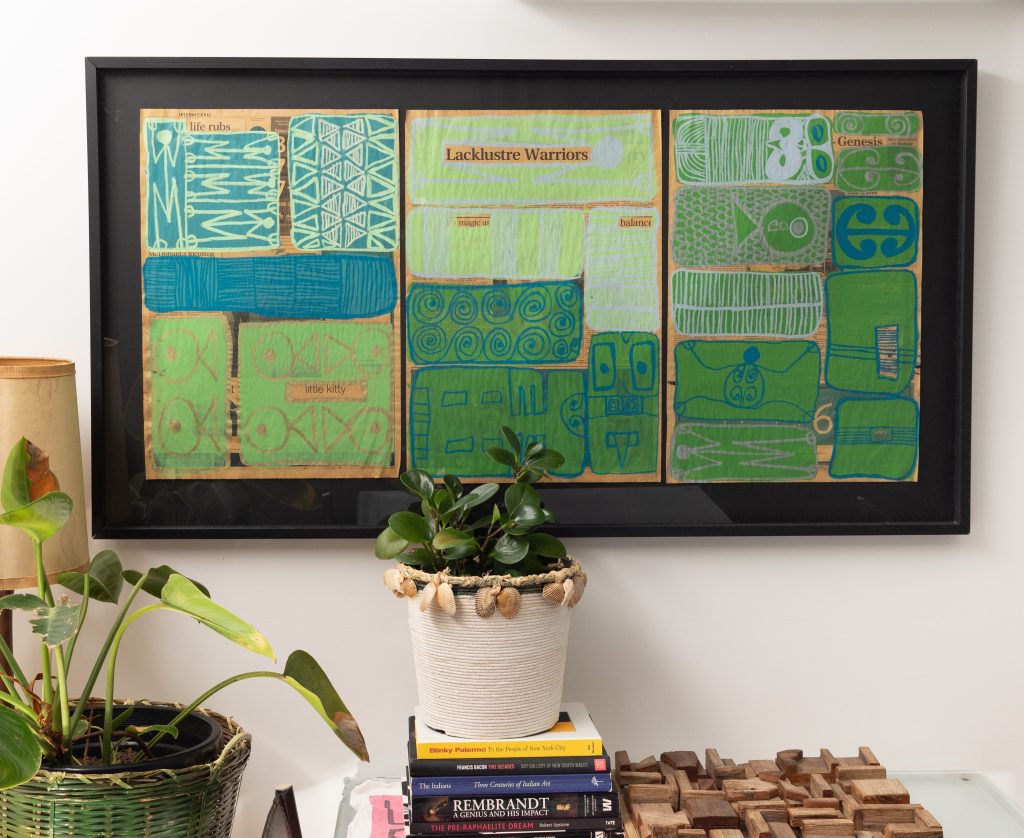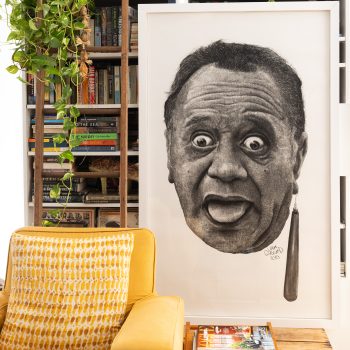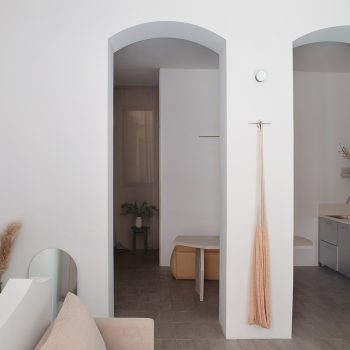SO YOU LOVE ART AND WANT TO START A COLLECTION
Primarily for low to medium income earners
_________________
When I say low to medium income collecting I generally mean artworks anywhere from $500 – $1000 up to $10k.
___________
To begin a collection you start putting a set amount of money aside each pay; preferably in a distinct account in an alternate bank allowing it to accumulate in isolation from the day-to-day- pressures on your living expenses.(1)
_________________
Additionally, you are researching online, buying art magazines(2) and have started attending exhibition openings at local galleries and art collectives. There is no better way to begin your desire to collect art. Don’t expect to buy something immediately: this exercise is to ignite the process of fine tuning your observations, learning what questions to ask, educating your instincts and refining discernment in relation to technique, concepts, and artistic depth. And, what really interests you.
When you are at the opening you need to speak to as many people as possible especially the artist, gallery operators, and other buyers.
__________________
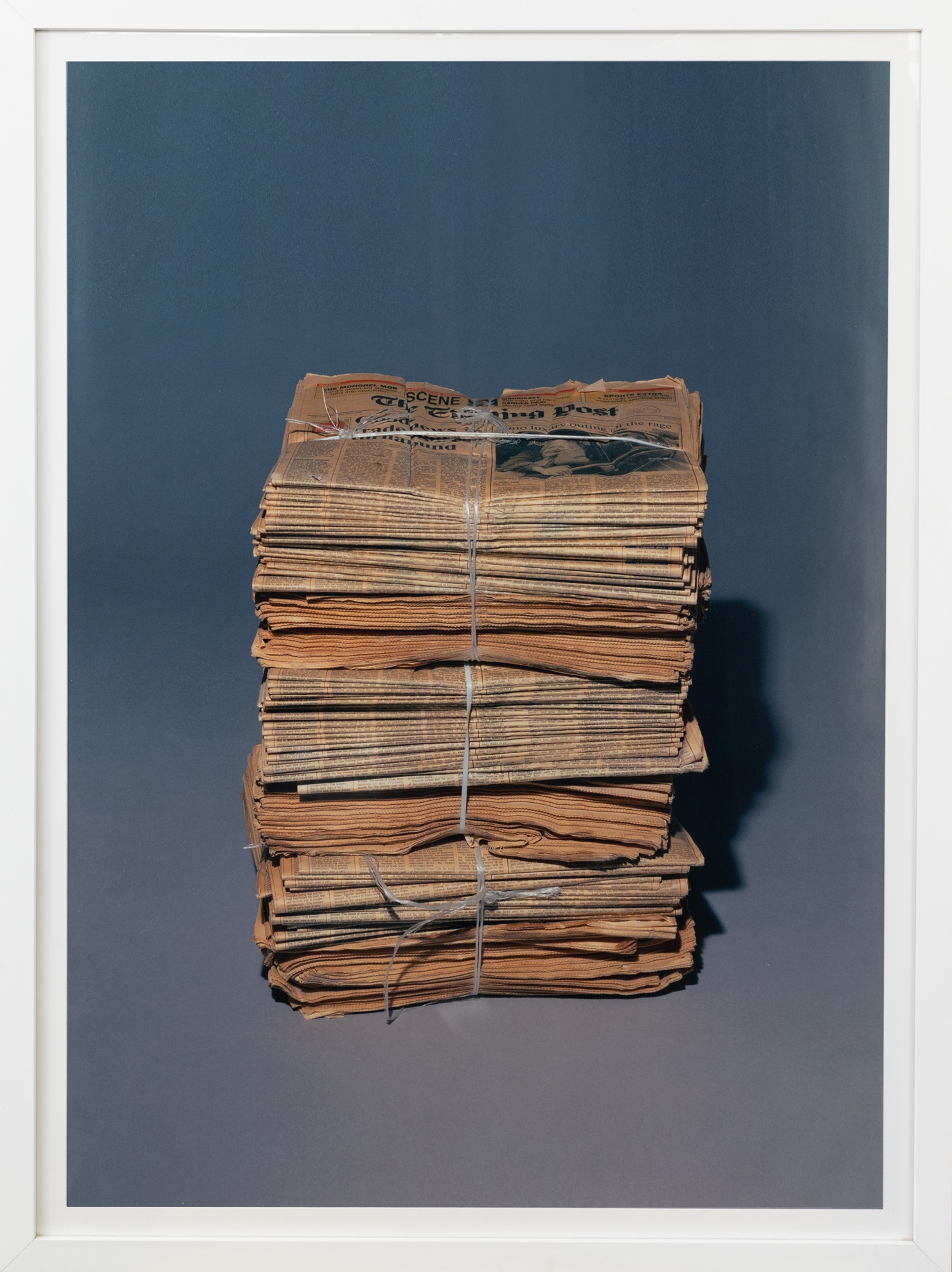
Kevin Capon, A stack of unopened newspapers, 2008, C-type print (ed of 6), 1500mm x 1200mm (590.55″ x 472.44″)
___________
As with collectors there are different levels of buyers: just starting out like you through to long term established buyers – generally collectors will be happy to tell you why they have bought this or that piece. Their comments and advice will mostly be ‘unbiased’ about the artist and the gallery, albeit not always. Keep in mind that sometimes their advice may be tempered by their relationship to the gallery in question.
Over decades, dedicated established buyers can develop strong relationships with gallery owners and they want to keep that relationship on solid ground to remain in that gallery’s good books: they want to hear what comes onto the market first to be at the head of the queue when important works come up for sale. And I know from working in galleries that buyers often depend entirely on the gallery for advice, and that advice may be conditioned by the desire to sell artworks; short of overt manipulation the gallery often walks a fine line between unbiased advice and invested advice. You have to trust your instincts.
Thus, you have to be aware and temper buyer’s advice with instinct, the gallery and other buyer’s opinions. You must remain objective, discerning and awake to manipulation by vested interests.
___________
At the end of the day the gallery and staff want to sell artworks, that is their primary aim, and buyers may have a vested interest. Whilst they normally buy from many different galleries (in that sense are a little more neutral), their tastes may not co-incide with yours. Always trust your gut when buying because you love it and it will go on your wall!
__________________
In the process of starting an art collection, be discerning about the gallery itself!
Establish relationships with worthy galleries: they have a long standing tradition of bringing on new artists that are talented and show promise. They display a comprehensive exibition programme (past, present and future), the corresponding exhibition literature is authentic and reflects the status of the artist (and is written by an art-knowledgable person: a person with credentials in their own right), and the director has excellent credentials. Ditto worthy art collectives.
Artist run art collectives and co-operatives that regularly hold exhibitions; go to their openings and engage as many people as you can. Customarily the works are cheaper because they don’t have to pay the gallery the requisite 40% + gallery fee.

__________________
While talking to other buyers ask them what to be mindful of when dealing with galleries, how they work and words of advice and wisdom. If they have been collecting for some time they will have very good advice.
Ask as many questions as you can – after all they were ‘you’ in an earlier time period.
Ask gallery staff to explain why such-and-such a work, or works have sold and the others haven’t. Or, look at what has sold and try and work out the reason for the sale. At the same time via contemplation, see what draws you back again and decide what you ‘feel’ is worthy and what is not. Sometimes the quality hits you in the gut immediately and you know (perhaps without really understanding why) that the work in front of you is complex, well priced, and you feel drawn to it. Or, you are baffled as to why they have sold, and while remaining vigilant to manipulation, gallery staff will be able to tell you why that is the case. Ask another buyer why this or that work has sold, or why they bought it in particular. If you feel it was not worth the money ask the gallery to explain why it is worth the money and what attributes it has that lower priced ones, or lesser works don’t have.
__________________
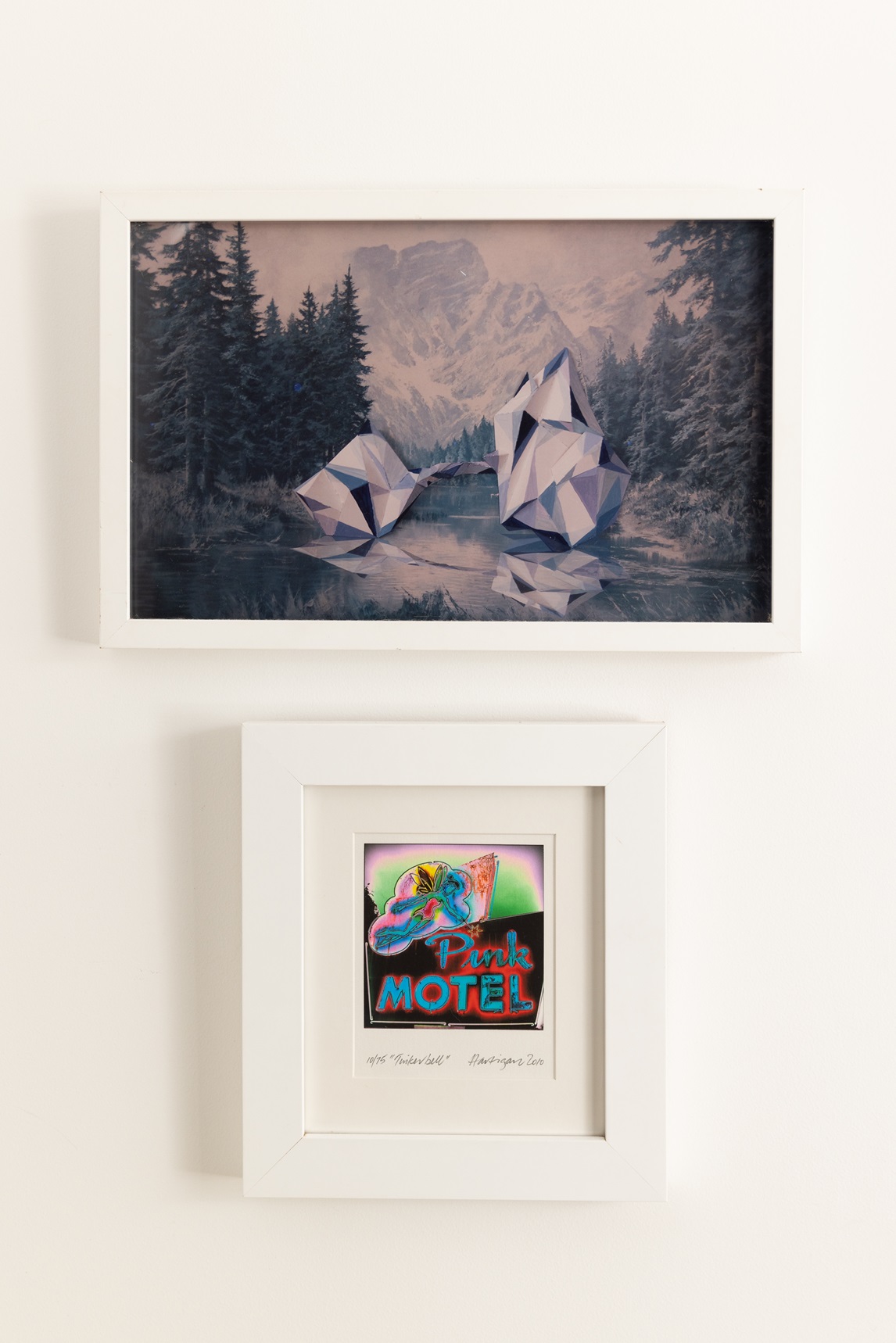
Reiterating from Part 1.
In the main, these articles are not for corporate buyers who buy for investment alone, or buy to develop a big collection of canonical art, rather those people who want to surround themselves with art in their home as a projection of themselves, but they want to know that what they purchase is credible, original and is ground in established and laudable motives. One key moment that awakens a desire to start a collection is the purchase of a new or first home and you want a ‘statement’ piece to both celebrate and begin your collection.
First and foremost, if it is going on display in your home, ‘buy what you love’!
If you only buy for investment you leave yourself open to manipulation by gallerists and art dealers. That is until you become a bit of an expert yourself. Most of your acquisitions will not appreciate in value in the way you may have imagined at the outset. Investing in art is a ‘long-term’ activity; highly researched and educated purchases bought today may take ten or twenty years to increase significantly in value, if at all (unless the artist is a much noticed rising star in the art world and they die suddenly).
__________________
Remember you do not have to justify your predilections or purchases to anyone.
If you Mum and cousin hate them, that is their prerogative: they are not displaying them in their home, you are. You didn’t buy the works to please others only to please yourself, “That’s OK Mum! You don’t have to like them!’ A qualification here; you may have a partner who also wants input and then you need a system of compromise if their preferences are completely different to yours. However, if you keep looking together, at some point your combined interests will intersect and you will come across work you are both happy to put on your wall.
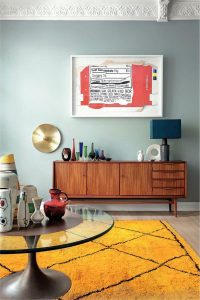
__________________
Most artists in the game for the long haul will produce worthy collectable art, however, all artist’s produce examples of work that do not represent their best work in terms of what identifies them as important.
Obviously dedicated artists experiment; it is important for them to solve technical, formal and conceptual problems in order to grow towards becoming noted and collectable both publicly and privately. The point is that quite often in an exhibition there will be highly collectable and not so collectable work: more experimental works done for the exhibition that may be too far left of field to be identified as a signature work by that artist.
You need to buy the best work you can afford from the best or most identifiable ones available (in terms of that artist’s signature style), and leave the works out of sync with the most important works in the exhibition (or not indicative of the ‘best works in the show’) alone. Those works are perhaps more experimental and deviate too far from what this artist has become known for. You might absolutely love it and that is fine – buy it! But the best work is ‘the best work’ (and will be priced accordingly) for a reason and it is better to buy those works as ‘they may’ also increase in value over the decades to come; all the while remaining aware that ultimately there is no guarantee either way.
The skill is buying both worthy, collectable art that you also love.
And to do that you need to go to a lot of exhibitions, read about a lot of art and artists, continually sifting through style, medium, and price.
__________________
If you are going to display your collection in your home make sure it reflects who you are, or a version of yourself you aspire to. When you look at the artworks you see yourself reflected back, even if it is a side of yourself others rarely see.
__________________
In part three prints will be discussed
__________________
Featured image: Tracey Tawhiao, Lacklustre Warriors, c 2006, oil, acrylic and pastel on newsprint, 56.5 x 120cm (22.24″ x 47.24″)
Kevin Capon is represented by Sanderson Contemporary
Paul Hartigan is represented by International Art Centre
__________________
(1)This exercise can also be conducted as a group: three – five ‘like-minded people’ working as a group of collectors. In which case a contract would need to be drawn up stating minimum contributions, and how funds are distributed towards the collection, and what you are going to collect: only Australian artists, only paintings, only sculpture, or a bit of everything. For example, what style (landscapes, still life, portraits, genre works (populated with people), interiors, surrealism; whether abstract or representational. Who makes the spend decision, how differences of opinion would be resolved within the group, and of course, how the art works will be rotated within the group. Whilst this is a way to obtain more art it is fraught with potential issues: who gets what when someone decides to pull out, or a partner of a group member lays claim to an artwork, one member of the group loses their job and can’t input funds etc etc.
(2)Buy (or source online) quality art magazines; by that I mean magazines containing articles and pieces written by prominent artists, academics, art directors, gallery owners and the like, or interviews with artist’s, and or prominent people in the industry.
__________________
ARTIST DEFINITIONS
Early career: An early-career artist, craftsperson or designer is in the initial stage of their professional career…they may be undertaking, or have recently completed, specialised training or study and are actively committed to professional practice. This may mean they are pursuing new and varied opportunities, dedicating time to making and developing work, showing or performing in exhibitions and at events, increasing public and industry awareness of their practice and reputation, seeking representation and beginning to develop networks and collaborate creatively. Paid work, such as commissions, project grants, performances, sales and exhibitions, is unlikely to be equivalent to full-time or continuous income.
Mid-career: A mid-career artist…has been developing an independent body of work and practice over a number of years, gaining recognition at a state and national level. This type of recognition can be achieved through public presentation of work, publication in magazines, online commentary such as essays and broad industry acknowledgement. Their income may come solely from creative work, or it may be supplemented by teaching and other forms of income that complement artistic practice. This stage of a creative career will generally not follow a typical upward trajectory. There may be times of intensive and overlapping work periods followed by stretches of little to no project work. A variety of professional development activities and experimentation may take place as an artist navigates this time in their career
Established artist: An established artist, craftsperson or designer has reached a high level of achievement in their career, having created a substantial body of work and gained national and international acclaim for their contribution to their discipline and sector. The market value of an established artist’s work is generally very high and may enable them to work at a slower pace and be more selective about what work they do and don’t undertake. Their practice and output are likely to be very recognisable and contribute to their prominence in the field.
Joanne Mattera discussion on the dangers and confusion of typifying artists as emerging / mid – late career, or ?

